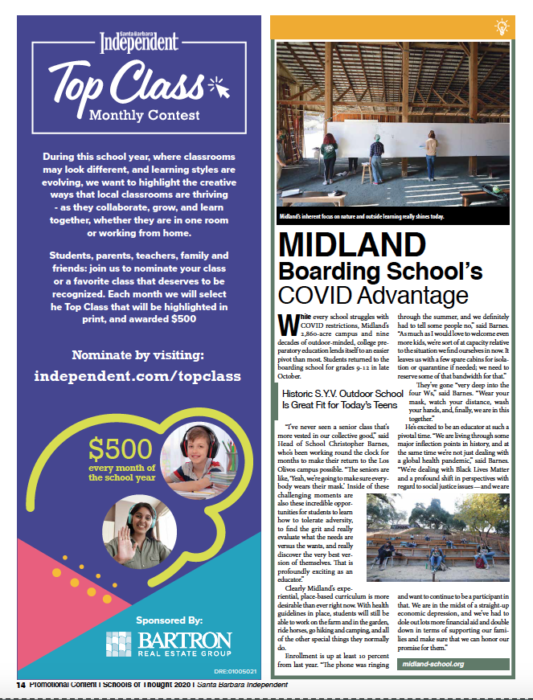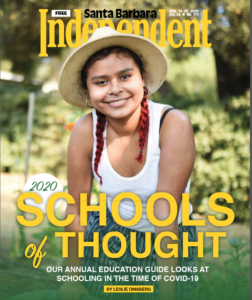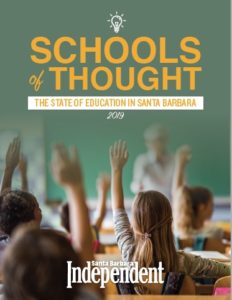
Midland Boarding School’s COVID Advantage, originally published in Santa Barbara Independent on November 19, 2020.
Historic S.Y.V. Outdoor School Is Great Fit for Today’s Teens
While every school struggles with COVID restrictions, Midland School’s 2,860-acre campus and nine decades of outdoor-minded, college preparatory education lends itself to an easier pivot than most. Students returned to the boarding school for grades 9-12 in late October.
“I’ve never seen a senior class that’s more vested in our collective good,” said Head of School Christopher Barnes, who’s been working round the clock for months to make their return to the Los Olivos campus possible. “The seniors are like, ‘Yeah, we’re going to make sure everybody wears their mask.’ Inside of these challenging moments are also these incredible opportunities for students to learn how to tolerate adversity, to find the grit and really evaluate what the needs are versus the wants, and really discover the very best version of themselves. That is profoundly exciting as an educator.”
Clearly Midland’s experiential, place-based curriculum is more desirable than ever right now. With health guidelines in place, students will still be able to work on the farm and in the garden, ride horses, go hiking and camping, and all of the other special things they normally do.
Enrollment is up at least 10 percent from last year. “The phone was ringing through the summer, and we definitely had to tell some people no,” said Barnes. “As much as I would love to welcome even more kids, we’re sort of at capacity relative to the situation we find ourselves in now. It leaves us with a few spare cabins for isolation or quarantine if needed; we need to reserve some of that bandwidth for that.”
They’ve gone “very deep into the four Ws,” said Barnes. “Wear your mask, watch your distance, wash your hands, and, finally, we are in this together.”
He’s excited to be an educator at such a pivotal time. “We are living through some major inflection points in history, and at the same time we’re not just dealing with a global health pandemic,” said Barnes. “We’re dealing with Black Lives Matter and a profound shift in perspectives with regard to social justice issues — and we are and want to continue to be a participant in that. We are in the midst of a straight-up economic depression, and we’ve had to dole out lots more financial aid and double down in terms of supporting our families
and make sure that we can honor our promise for them.”
Originally published in the Santa Barbara Independent on November 19, 2020. To read the section as it appeared in print, please click here.


 Click here to read this story as it originally appeared in the
Click here to read this story as it originally appeared in the 

